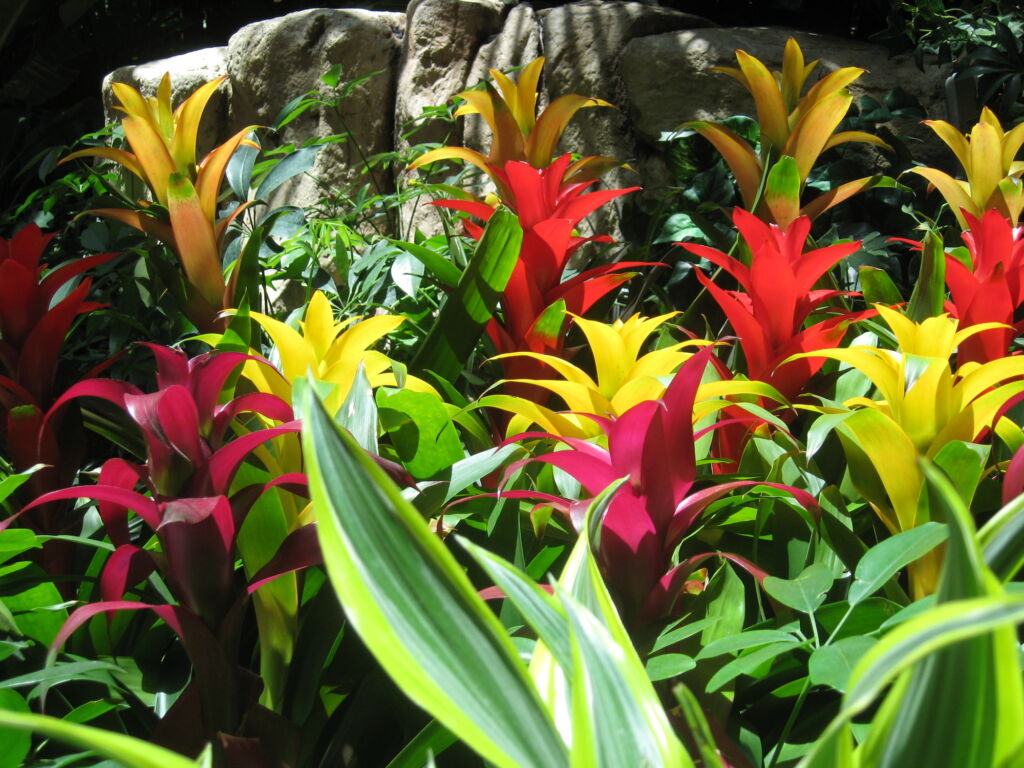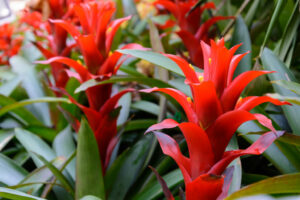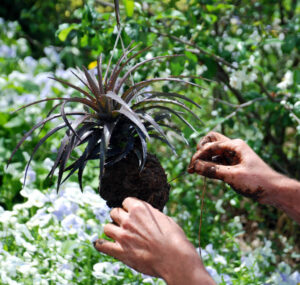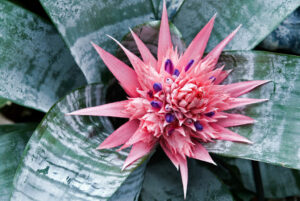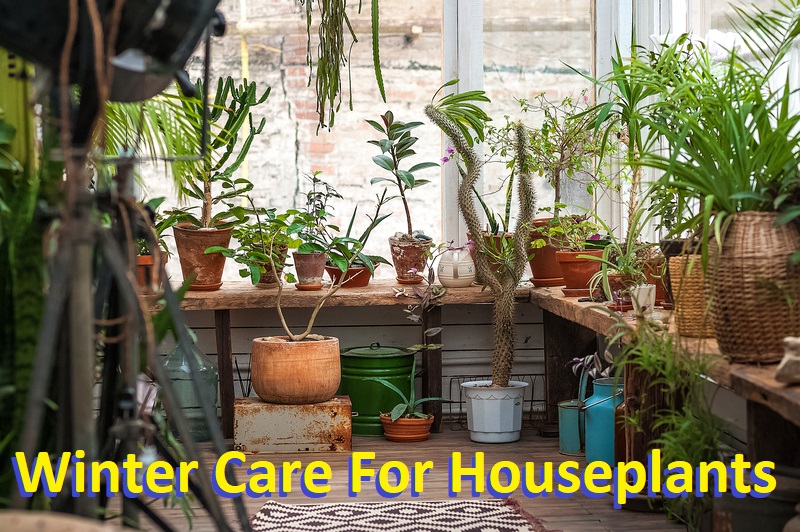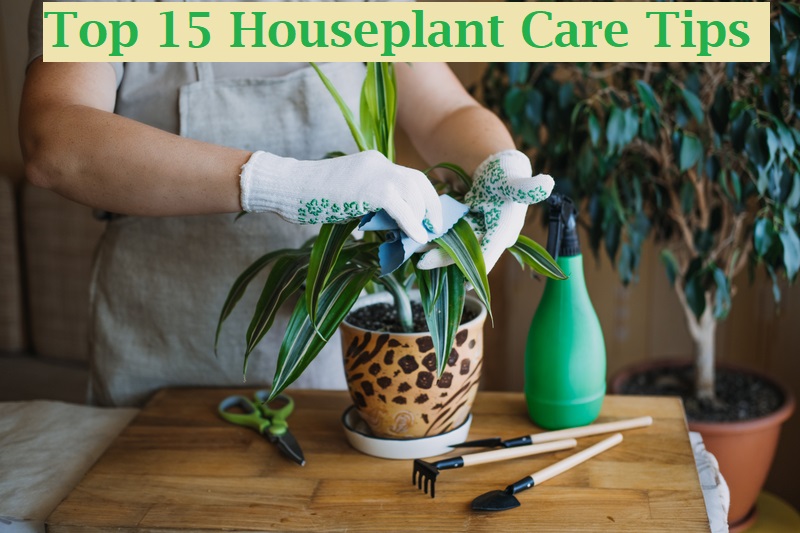HousePlantJoy is supported by our audience. When you purchase through one of our links, we may earn a small affiliate commission. As an Amazon Associate I earn from qualifying purchases. Your cost is not affected.
==================
Know And Care For Bromeliad Houseplants
Are you interested in having bromeliad houseplants added to your home? If you are then must know how to take care of them. People know these flowering and evergreen perennials for their beauty. They display stunning foliage and colorful blooms. Hence, they make superb decorative plants. But, to make them attractive, there needs to be quality care first. So you ought to discover how to make them thrive if intend to have these houseplants indoors or outdoors.
What is a bromeliad plant supposed to look like? What makes them special? In this article, we’re going to discuss the various aspects of these angiosperms. Included are tips to identify and take care of one. So read on for information that may guide you about the care for bromeliad plants.
Describe Bromeliad Houseplants
What is a bromeliad in simple terms? This type of plant is available in varieties. Usually, though, the variants have similar features. For instance, they have stemless and overlapping leaves. They also produce rosette blooms. Most of the time, the thin, smooth, and shiny foliage and blossoms of these plants catches water. These structures are quite beneficial to the environment too. Their parts allow them to supply water to many organisms and help them thrive. Hence, it helps establish or support a green ecosystem.
Bromeliads come in unique shapes and sizes. As houseplants, folks often put them in pots that are smaller than them. Almost always, owners of these plants treat them as ornamental. Blooming red, purple, blue, and orange flowers for 3 to 6 months, these plants can add design to any space at any time. Even if they only blossom once in their lifetime, at least you can propagate them. Plus, they can grow on the ground, rocks, and even trees. So they look great and are sustainable angiosperms to take care of.
Water and Humidity Needs Of Bromeliad Houseplants
As part of the essential care for bromeliad plants, they must have water. The hydrophobic foliage and roots absorb the liquid in a central tank. It’s because they need enough for photosynthesis or food production. But, when hydrating them, it’s best to mist them or subject them to rainfall that is natural to them. Take note that they are susceptible to root rot due to overwatering. So, as indoor plants, they need to be where there is high humidity. Also, they must only get enough to moisten the ground that holds them.
What is a bromeliad to have for a good watering environment? Putting it on a well-draining pot and setting it on a pebble tray can help keep it dry. It’s also a drought-tolerant kind of indoor plant so putting it where it’s warm is fine. When watering it, check the soil dryness before the next hydration. It would be ideal to see if an inch deep in its soil is no longer wet before watering. Thus you don’t have to keep putting water on it and hydrating it once a week is usually enough.
Fertilizing Bromeliad Houseplants
Giving them plant food once a month is enough to make them survive and grow well. Many say that the care for bromeliad plants involves using liquid fertilizer too. Epiphytic or tree-growing variants absorb nutrients through their leaves and roots. Most varieties of bromeliads are good with low-nitrogen or balanced fertilizers. After all, they don’t need a lot of nitrogen to grow into big plants. Thus be picky when feeding these with compost or liquid plant food.
Like other plants, bromeliads also have a season for active growing and dormancy. This is even if many of the varieties grow and display flowers all year round. Hence, if possible, try to fertilize the soil more but about once a month only during the growing period. It’s when they need nutrients and energy the most to let out better roots plus more leaves and blossoms. This happens from late March to late September or springtime to fall. Leave the plants during wintertime since they can manage to thrive well then. In that way, it’s important to be systematic and have timing when feeding them.
Sunlight Requirements Of Bromeliad Houseplants
What is a bromeliad better off having? Sunlight or artificial light? Bromeliads can do well outside but can also thrive indoors. It’s only because these flowering plants don’t demand a lot of sunlight. This is why, in lighting, low-maintenance care for bromeliad is enough. Putting grow lights on them could be enough already too. With too much light and heat, their leaves can burn and wither. Bright or medium and indirect light is already great for them to have. Spots with dapple illumination or partial shade are ideal for them too. But this depends on the kind of bromeliad you have. Those with thick leaves often need more light compared to those having thin foliage. Hence, be careful how you expose your bromeliads to light sources.
Unlike other indoor vegetation that does well near windows, this one is better to set on a countertop. There must be enough distance between it and areas where the sunlight hits. Still, when inside, subjecting it to bright artificial light for hours may be enough. Bromeliads can also manage the cold and sometimes even take freezing temperatures. So they make excellent plants for interior design and companionship.
Pest Prevention and Care For Bromeliad Plants
Like other plants, they are also susceptible to pest infestations. They draw insects because they contain a lot of water. Also, their leaves and stems often serve as food for certain creatures. Because of this, as the owner of bromeliad houseplants, you must know how to free them of these critters. To do that, try to clean their leaves while they are healthy and even after they bloomed. Wipe off any dust particles on and near them and get rid of any unwanted debris. If there are dead leaves, prune them too. These things lessen the likelihood of pests thriving on them.
Aphids are some of the most common problems that destroy bromeliads. Killing them involves applying a mixture of soap and water onto them or the plants they’re on. Plucking insects off of them may work too. But doing so may sometimes prove to be time-consuming. Because of that, put artificial and natural insect deterrents near them. Making sure that bromeliads drain water or get prayed with essential oils also helps. These measures prevent and get rid of true bugs. So it’s important to watch bromeliads before and after they bloom to see if they’re fine.
What Should Bromeliad Houseplants Have?
Right now, the known species of bromeliads amount to more or less 2,700. One that many find easy to identify is the Pineapple because of its edible fruit. Even if many are around, popular ones are available and propagated by gardeners too. Hence, it’s possible to different kinds in flower or garden shops. Before visiting a store that sells these, familiarize yourself with the popular varieties. It may help you not get overwhelmed by the selection of bromeliad houseplants. Also, it’s so you could pick well-researched plants and those that are often easy to care for.
An example of a known one is the Guzmania or Tufted Air bromeliad. Also considered an air plant, it is epiphytic or grows on trees. Living on orchid and well-draining soil, it also absorbs nutrients from the atmosphere. Varieties of this yield pink, red, purple, yellow, and orange blossoms. Another one is the Portea which lives in full sun, is sensitive to frost, and tolerates drought. It may have sharp leaves but it delivers magical flowers available in violet, blue, and pink hues. There’s the Canistropsis with lance-shaped foliage on top of one another. This one has a bright yellow, pink, red, or orange flower at the center too. But, of course, the other varieties are as appealing as these. So try to explore the unique variants to discover which one to get.
What Makes Bromeliad Houseplants Worth It?
Different varieties produce appealing flowers to complement or contrast the colors of rooms. They also have interesting shapes that may lure owners and even guests coming over. Some have thick or thin foliage with sharp edges. This means that picking them up means holding them by the pot that contains them. Hence, they are not easy for thieves to steal. Also, they are low-maintenance plants. So you don’t need to keep watering them or exposing them to sunlight. You must not overdo using fertilizer on them too. Thus we can say that they are not costly plants to keep.
Another thing that makes the care for bromeliad worth it is that this plant produces oxygen at night. While it absorbs carbon dioxide in the morning, it releases breathable air when it gets dark. It always takes in pollutants in the atmosphere too. Thus it makes for a good indoor plant since it makes sleeping relaxing and cozy. Plus, in parts of Asia, it serves as a plant that represents good fortune and wealth. For many reasons, it’s worth taking care of.
In Conclusion
Bromeliad houseplants are excellent to have at home. Varieties provide beautiful shapes, shades, and other attractive physical features. Also, they are easy to grow and maintain plus help clean the air in the morning and night. Hence, with these things, it’s clear that they can aid in home design. Still, they can reduce stress levels, enhance productivity, and grant better sleep. So consider adding some in your home and knowing the care for bromeliad plants.
We hope you enjoyed reading this article and found some useful info in it about bromeliads. Do you have some in your home already? For you, what are they like? If you have experience with these plants, please let us know in the comments section. Thanks for reading and have a pleasant day.
Read More
7 of the Best Indoor Tropical Plants
Easy to Grow Flowering Houseplants

